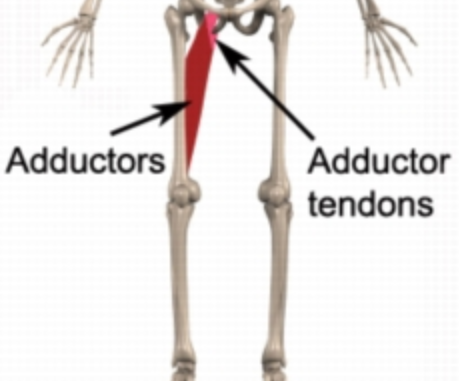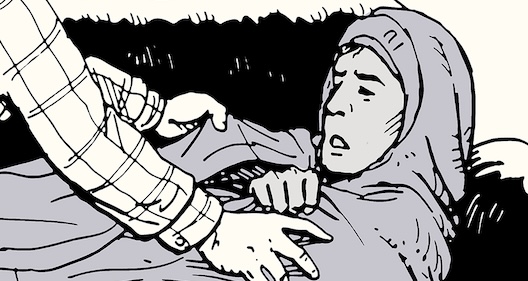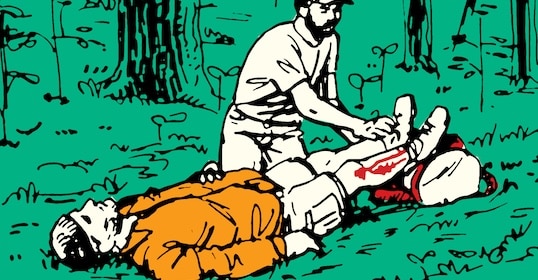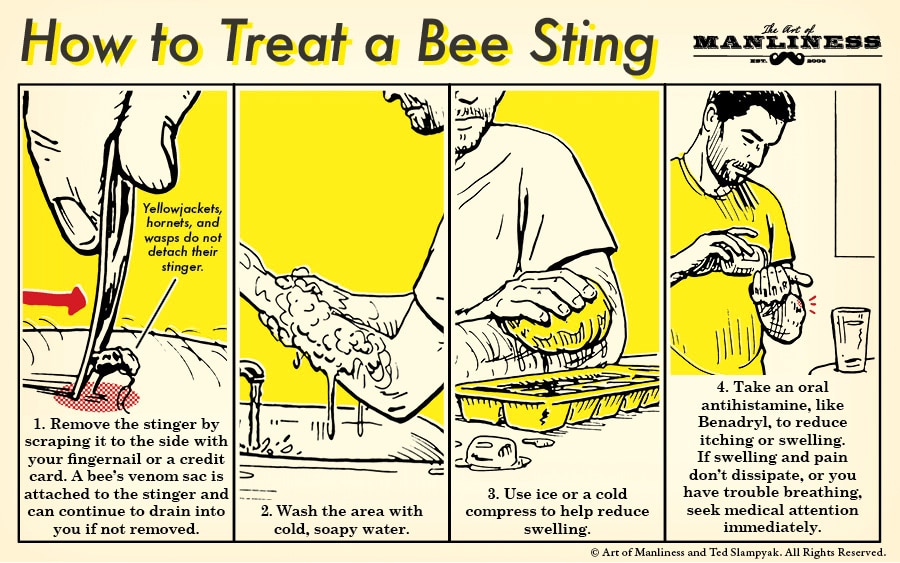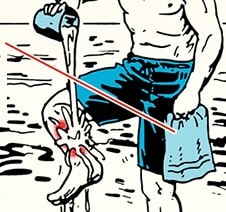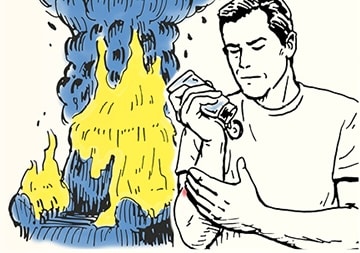Back in March of 2018, I started feeling really tight and sore in my groin area whenever I was doing barbell squats. It came on gradually and over a few weeks, it got worse and worse. Since it felt like tightness, I thought I just needed to do some butterfly stretches, so I did that, but it didn’t help. In fact, it just seemed to make it hurt even more. The tightness and pain kept getting more intense until it finally reached the point that it hurt so bad I could no longer squat.
I told my barbell coach Matt Reynolds. owner of Barbell Logic Online Coaching about the pain, and he went to Starting Strength Coach, physical therapist, and super strong dude Nick D’Agostino to get his input. Nick had a hunch that I was experiencing some adductor tendonitis and prescribed a treatment plan for it.
I’ll be damned, after a few weeks of following Nick’s recovery plan, I was back to squatting to full depth, even with heavy weight on my back.
I figure I’m not the only guy to experience adductor tendonitis during their barbell training. So below I share what Nick had me do to fix this annoying pain in my groin.
What Is Adductor Tendonitis?
Adductor tendonitis is an inflammation of the adductor tendons. It’s also known as athletic pubalgia or sports hernia (even though it’s technically not a hernia). You’ll feel a pain or tightness in your inner thigh going up into your groin whenever you contract or stretch your adductor muscles (the muscles in your upper thigh that pull your legs together when they contract). Adductor tendonitis comes on slowly. There isn’t a specific incident that causes the pain to start. It’s just inflammation caused by overuse of the tendon.
In a Barbell Logic interview, Nick says he often sees adductor tendonitis pop up at the beginning and end of training cycles. At the beginning of a cycle, your muscles might be able to do the work of lifting a lot of weight a lot of times, but your tendons aren’t and they get inflamed. At the end of a training cycle, you’re just physically beat up, so tendinopathy (irritation of the connective tissue) is more likely to pop up.
In my case, my adductor tendonitis started during the first part of a new training cycle where Reynolds had me doing a lot of volume. My muscles could handle the work, but my tendons weren’t happy about it.
The Adductor Tendonitis Treatment Plan
Before You Squat: Perform Isometric Squeezes
To reduce the pain in your tendon that you’ll experience while squatting, Nick recommends using isometric squeezes to produce an analgesic (pain reducing) effect in your mind and body.
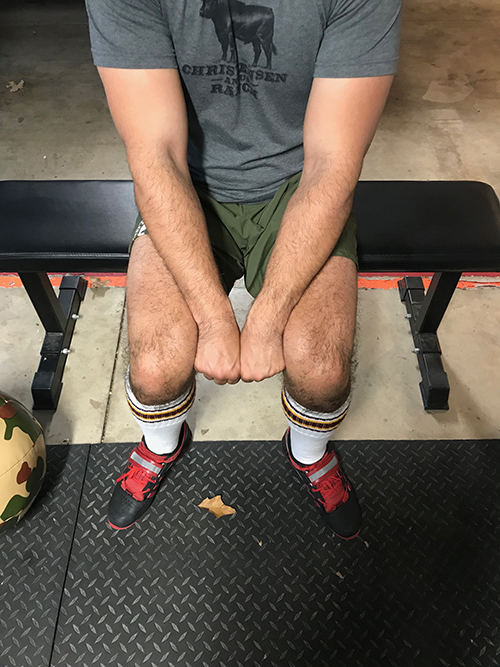
Here’s how to do it: Make two fists and stick them together. Now stick your two fists between your knees and squeeze your fists with your knees as hard as you can, holding this position for 30 to 40 seconds. You can also squeeze a medicine ball between your knees instead, which I have found to be more effective than squeezing my fists.
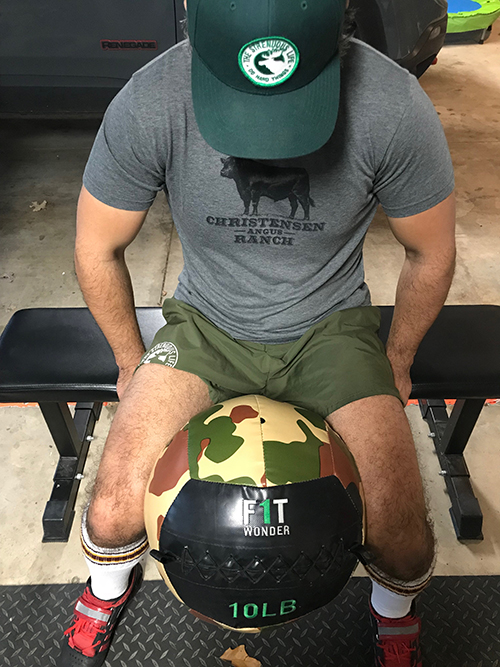
This squeezing exercise will cause your adductors to contract, which causes your adductor tendonitis to start hurting. Keep holding even though it’s hurting, and it will stop hurting after twenty seconds or so. Why? Basically, your brain recalibrates the perceived pain level. As you’re isometrically contracting your adductors, your brain sees that there’s nothing really happening that’s damaging your body, so it says, “Well, maybe we don’t have to say this hurts as much.” You’re playing a trick on your brain.
After you squeeze your fists with your knees for 30 seconds, relax, and then squeeze until you start feeling the pain again. You may have to squeeze even harder this time because the analgesic is already taking effect. Once it starts hurting, hold it for 30-40 seconds. Relax, and repeat for a total of five times.
By the time you’re done, you should have reduced the pain enough to allow you to squat. The analgesic effect that comes from doing these isometric squeezes should last a few hours, according to Nick.
These isometric knee squeezes have become part of my warm-up routine on squat days when I’m feeling a niggle of adductor tendonitis. It only takes a few minutes, and I’ll do them between my warm-up sets.
While You Squat: Wear Compression Bands Around Thighs
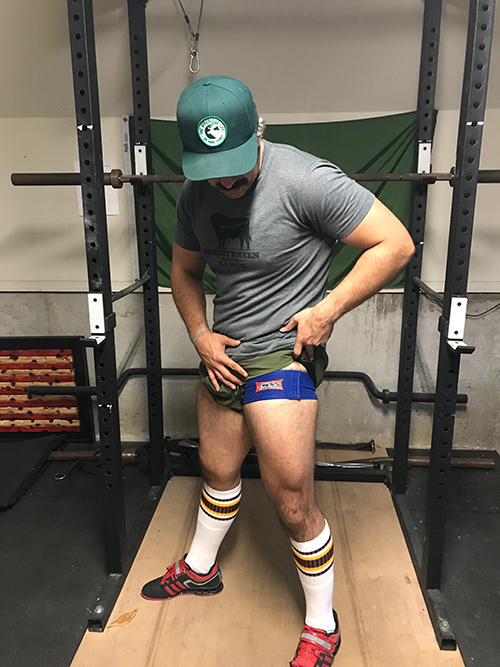
Sexy.
This wasn’t a recommendation from Nick, but something that I was inspired to do from my battle with bicep tendonitis. Whenever my bicep tendonitis gets cranky, I wear elbow compression cuffs from Slingshot. They keep my elbows warm and the compression just dulls the pain so I can continue to lift. They really make a big difference.
I figured if compression cuffs worked for my bicep tendonitis, they’d work for my adductor tendonitis too. So I bought some Hammy Bands from Slingshot. When my adductors are feeling grumpy, I put them on under my shorts before I squat and pull them up so the bands cover the area in my groin where it hurts the most.
They really do make a big difference. It doesn’t completely eliminate the pain, but it reduces it enough that I can squat without it hurting much at all.
I’m sure a compression short of some kind could work just as well.
To Rehab: Replace Squats With Pin Squats

Isometric squeezes and compression bands will help alleviate the pain of adductor tendonitis so you can continue lifting. But if you actually want to heal the problem, you’ll need to ease up on the tension you’re putting on your tendons. You don’t have to stop squatting altogether, but you do have to squat differently for a time.
When my adductor tendonitis got so bad that I could no longer squat to depth, Matt replaced regular squats with pin squats. With a pin squat, you set the safety pins on your squat rack so that you can rest the bar on the pins when you’re at the bottom of the squat.
Matt had me set the pins so that the bar rested on the pins at the point I started feeling a bit of pain in my groin. In the beginning of my rehab, this meant that my squat was about 2.5 to 3 inches above full depth. Weight on the bar was kept heavy and I did sets of 3.
The next squat session, if I was able to go down lower before feeling any pain, we’d set the pins to that new level. Some weeks I was able to lower the pins each week and some weeks I had to keep it the same height. We continued this process until I could finally get back down to a full depth squat without any pain and then we removed the pins.
It took me a good two months of pin squats before I got back to regular squats. Tendinopathies take a while to heal. The longer you’ve had the problem, the longer it takes to go away. You just have to be patient and do what you can.
I haven’t had to do the pin squat rehab since my initial serious bout with adductor tendonitis. I’ve been able to keep a check on it with the occasional use of isometric squeezes and hammy band wearing. Matt still has me do pin squats sometimes, but simply used as an accessory lift in my regular programming.


